Top 10 Best Tools For Remote Employee Onboarding

The contemporary workplace has experienced a revolutionary change in which the standard model of remote working has become the new paradigm in the business world. Companies are already discovering that the successful integration of remote employees is very important. Identifying the Best Tools for Remote Employee Onboarding has proven to be a necessity for any company that wants to retain a productive, engaged, and retained workforce.
Such advanced platforms help simplify administrative procedures, connect new employees and other employees in a valuable way, and allow them to access the resources they may need easily. Onboarding solution, the right one, can make a significant difference in terms of employee satisfaction, decreasing the time-to-productivity, and laying a solid basis for long-term success in distributed work settings.
What is Remote Employee Onboarding?
Onboarding of remote employees is a complex digital method that incorporates new members into an organization’s culture, systems, and hurdles at work without involving them on-site. Such a planning method includes starting with paper documentation and system access provisioning, all the way through cultural integration and training provisions aligned with a specific position.
In contrast to the conventional onboarding, which is offline, remote onboarding depends largely on the technology platform to build an enriched interactional experience to build a sense of connection and familiarity. Its best tools to onboard remote employees help in fluent communication, automating all monotonous administrative procedures, and offering structured learning pathways that would allow new employees to navigate the first weeks and months of employment. Through this process, the newly hired staff feel integrated, satisfied, and poised to make active contributions on the first working day and onwards.
Why Remote Employee Onboarding Tools are Important
Choosing proper onboarding solutions is of paramount importance to organizations coping with the realities of the distributed workforce management process, allowing the new hire to succeed.
- Efficiency: High automation levels do away with paper-based administrative procedures and help in saving the administrative load, besides increasing the speed of achieving targets by far.
- Consistency: Uniform onboarding processes mean that all of the new hires obtain the same information, training package, and cultural exposure wherever they are.
- Engagement: Features of interactivity, multimedia content, and use of gamification tactics keep the participants interested in the integration process at all levels.
- Compliance: Inclusive regulatory structures can enable companies to do business or operate within automatic compliance with laws and regulations, trade practices, and organizational guidelines.
- Analytics: Detailed reporting systems can be useful in terms of learning more about the success of onboarding, the levels of completion, and what needs to be enhanced or optimized.
Essential Features to Look for in the Best Tools For Remote Employee Onboarding
Organizations should take into account certain features when considering different possible onboarding providers to ensure that the outcomes in terms of improved experience of new employees and efficiency allow these vendors to work.
- Automation: Smart task sequencing does away with the need to have manual intervention with the process, where key steps are taken at relevant times in the process.
- Integration: Near frictionless connectivity to current HR systems, communication channels, a nd productivity platforms allows the work to flow together, devoid of data silos.
- Customization: Ideally, it is flexible templates and configurable workflows that suit the varied roles, departments, and organizational structures and ensure brand consistency.
- Security: This would include instituting sound data protection mechanisms, user-based controls, and compliance to ensure such sensitive data about employees is well secured during the onboarding experience.
- Analytics: real-time dashboards and extensive reporting give insights that can be acted upon to know what is happening in programs and how individual participants are doing.
Comparison Table for Best Tools For Remote Employee Onboarding
| Tool Name | Rating | Best Feature |
| BambooHR | 4.5/5 | Electronic signature support with automated workflows |
| ServiceNow ITSM | 4.4/5 | AI-powered self-service portal for issue resolution |
| Basecamp | 4.2/5 | Real-time group chat with project organization |
| Okta Workforce Identity | 4.6/5 | Single sign-on with adaptive security policies |
| We360.ai | 4.4/5 | Customizable productivity reports with real-time monitoring |
| Teramind | 4.6/5 | Comprehensive behavioral analytics and monitoring |
| Hubstaff Tasks | 4.6/5 | Integrated time tracking with multiple project views |
| EmpMonitor | 4.6/5 | Insider threat prevention with activity monitoring |
| WorkStatus | 4.6/5 | GPS tracking with centralized employee management |
| Jira | 4.3/5 | Project boards with dependency management |
10 Best Tools For Remote Employee Onboarding
1. BambooHR
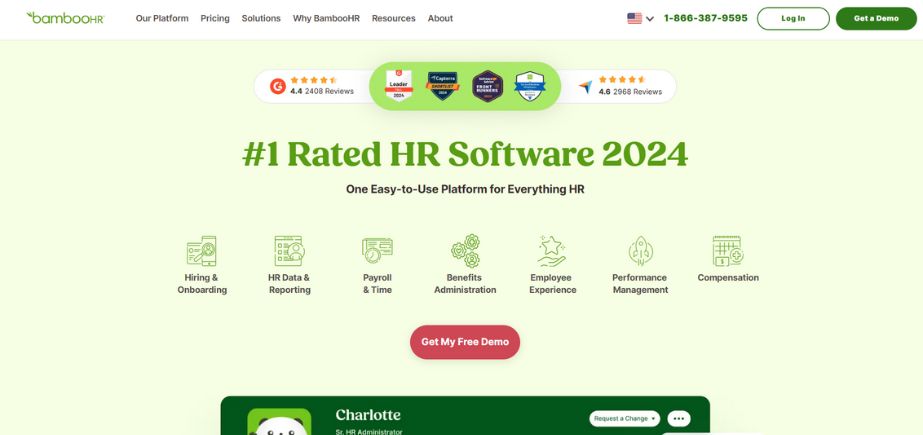
Rating: 4.5/5
Website: bamboohr.com
Best Use Cases: Streamlined HR automation and new hire integration
BambooHR isall-aroundound human resources platform that is uniquely adapted to introduce a revolution in the onboarding process of remote employees. It is a scalable solution to culminate the tedious manual processes, tasks being replaced with smart automation, helping the HR personnel concentrate on building relationships and establishing relations rather than administrative functions.
The platform elegantly marries document management, electronic signatures, and custom workflows to accommodate onboarding in a cohesive process. Newcomers enjoy custom pathways of onboarding processes that suit their role and departments. The interface of the system is easy to use, and the administrators as well as staff can easily navigate through the processes, unlike before, which makes the system faster in minimizing confusion and shortening the time-to-productivity of distributed teams.
Key Features:
- Electronic signatures support
- Automated workflow management
- Customizable hire packets
- HRIS data analytics
- Culture management tools
Pros:
- Streamlined automation processes
- Excellent user interface
- Comprehensive HR features
Cons:
- Higher pricing tiers
- Limited customization options
- Steep learning curve
Pricing: Starting at $99/month for up to 25 employees with scalable plans for larger organizations.
2. ServiceNow ITSM

Rating: 4.4/5
Website: servicenow.com
Best Use Cases: IT service management and automated support systems
The ServiceNow ITSM reshapes the pes technicalities of remote employee onboarding by using advanced capabilities of sophisticated automation and artificial intelligence. This business-grade system ensures that the new employees have access to the required systems, applications, and support resources on the first day.
The self-service portal that operates technologically on AI will enable employees to resolve some typical technical problems by themselves, decreasing their dependence on IT help desks. Intelligent machine learning algorithms will channel service requests to the proper colleagues to resolve onboarding-related technical issues as quickly as possible.
The mobile app on this platform allows new employees to know the status of the request, which adds transparency and communication between employees during the integration process.
Key Features:
- AI-powered self-service portal
- Automated incident management
- Smart recommendation engine
- Mobile status tracking
- Remote desktop integration
Pros:
- Advanced AI capabilities
- Excellent mobile support
- Comprehensive service management
Cons:
- Complex initial setup
- Enterprise-focused pricing model
- Requires technical expertise
Pricing: Custom enterprise pricing based on user count and feature requirements.
3. Basecamp by 37signals

Rating: 4.2/5
Website: basecamp.com
Best Use Cases: Project organization and team collaboration management
Basecamp offers a user-friendly project management platform that revolutionizes the involvement of remote teams during the onboarding process. This easy-to-use tool plans the tasks, provides real-time communication, and keeps the project visible in distributed teams. New workers have an opportunity to get access to the history of the project, grasp organizational functions, and make a valid contribution to current projects.
The client portal functionality of the platform helps external stakeholders stay engrossed in projects, as every stakeholder would have a thorough view of the onboarding process. Basecamp is especially well suited to organizations that do not want too much complexity, both in terms of simplicity and feature bloat.
Key Features:
- Project prioritization tools
- Real-time group chat
- Client portal access
- File sharing capabilities
- Daily standup features
Pros:
- Simple user interface
- Excellent client collaboration
- Flat-rate pricing model
Cons:
- Limited advanced features
- No time tracking
- Basic reporting capabilities
Pricing: $99/month flat rate for unlimited users with 500GB storage and premium features.
4. Okta Workforce Identity Cloud
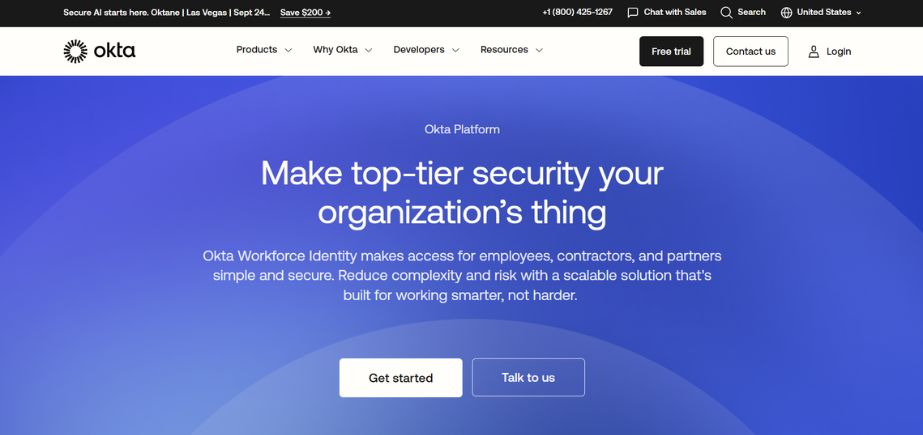
Rating: 4.6/5
Website: okta.com
Best Use Cases: Secure identity management and access control systems
Okta Workforce Identity Cloud is a game changer in terms of security and access during remote onboarding of employees by providing the capability to manage sophisticated identity verification and single sign-on. This is a strong platform that allows new employees to have secure, instant access to the required applications and combines high levels of security.
The adaptive security system dynamically changes the levels of protection depending on the pattern of user action and location of access to services, ensuring sound security with a compromised user experience. Automated lifecycle management simplifies onboarding and offboarding and grants or reclaims the appropriate levels of access. The advanced integration support of the platform integrates perfectly with any current systems and applications of the organization.
Key Features:
- Single sign-on functionality
- Multi-factor authentication protocols
- Adaptive security policies
- Automated lifecycle management
- Comprehensive app integration
Pros:
- Excellent security features
- Seamless app integration
- Automated user management
Cons:
- Premium pricing structure
- Complex configuration requirements
- Learning curve challenges
Pricing: Starting at $2 per user per month, with advanced features available in higher tiers.
5. We360.ai
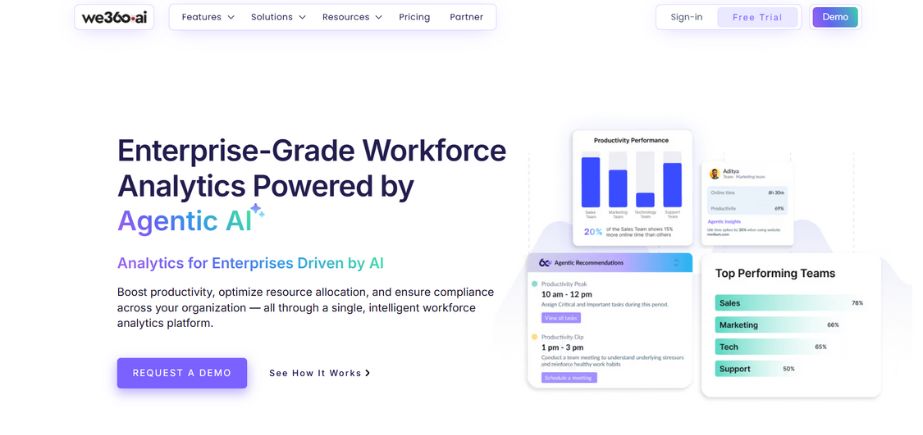
Rating: 4.4/5
Website: we360.ai
Best Use Cases: Performance monitoring and productivity analysis systems
We360.ai provides advanced performance management services that precisely target off-site staff optimization and onboarding new staff. Based on this novel platform, real-time monitoring and analytics, through which the manager will get to know how newly hired employees integrate into their jobs and responsibilities, are made available. Flexible productivity reports provide comprehensive information about particular performance indicators, which will allow supporting and providing development interventions.
The constant progress tracking feature provided by the platform will help the managers to remain up to date with current activities so that they spot out any possible difficulties before they affect the rate of productivity. These abilities render We360.ai an especially useful tool to organizations that focus on the possibility of making data-driven decisions regarding onboarding and constant progressions.
Key Features:
- Real-time performance monitoring
- Customizable productivity reports
- Progress update tracking
- Analytics dashboard integration
- Performance optimization tools
Pros:
- Comprehensive monitoring capabilities
- Detailed analytics reporting
- Real-time insights
Cons:
- Privacy concerns potential
- May feel intrusive
- Requires careful implementation
Pricing: Custom pricing based on organization size and monitoring requirements.
6. Teramind
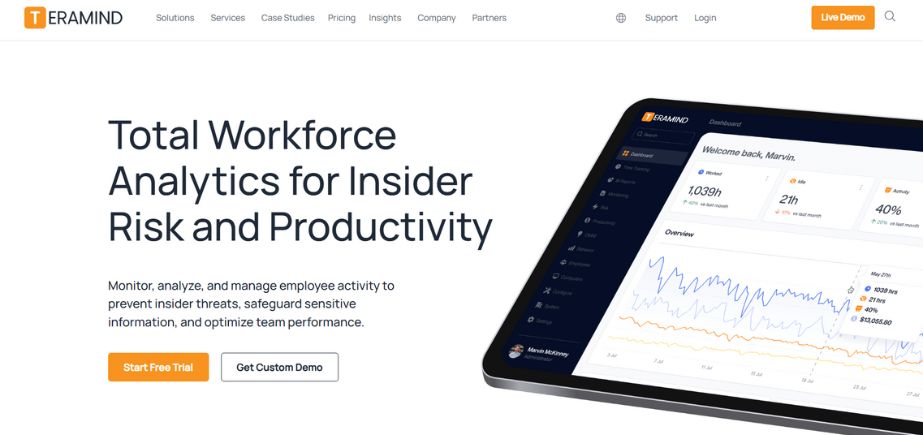
Rating: 4.6/5
Website: teramind.com
Best Use Cases: Advanced employee monitoring and behavioral analysis
Teramind includes advanced monitoring features that allow bringing visibility into employee actions and behaviors when working remotely during the onboarding process to a new level. This elaborate system provides elaborate information using application tracking, monitoring of websites, and analysis of behavior patterns. The centralised dashboard breaks down all staff information, online status, location information, and activity report so that managers can offer their assistance where it is necessary.
Behavioural intelligence reports would highlight the productivity trends and development areas, which are important in carrying out individualistic coaching and development programs. These tracking mechanisms are superior since they can provide the necessary guidance to the new employees, and above all, the productive standards can be kept throughout the integration process.
Key Features:
- Centralized activity dashboard
- Application usage monitoring
- Website tracking capabilities
- Behavioral intelligence reports
- Live screen viewing
Pros:
- Comprehensive monitoring features
- Detailed behavioral analytics
- Real-time visibility
Cons:
- Potential privacy concerns
- Complex feature set
- May reduce employee trust
Pricing: Starting at $10.80 per user per month with enterprise options available.
7. Hubstaff Tasks
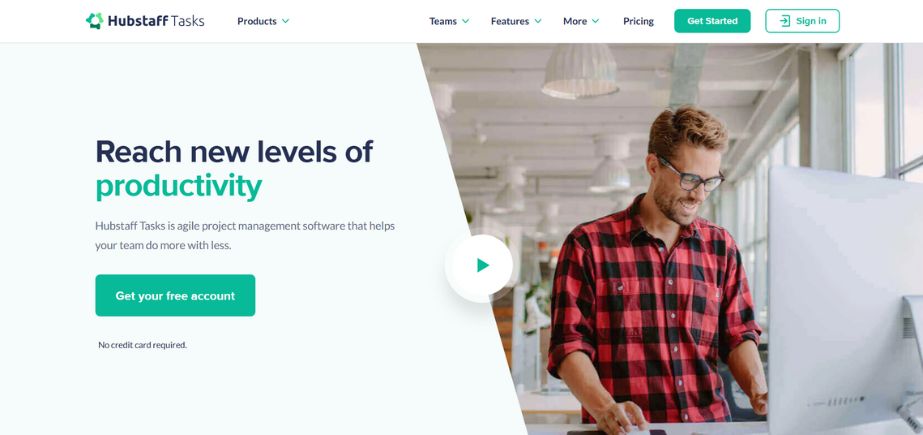
Rating: 4.6/5
Website: hubstaff.com
Best Use Cases: Task management and time tracking integration
Hubstaff Tasks is a project management app that includes embedded time tracking tools that can provide a complete tool that may be used to onboard remote employees and continue handling their productivity. Thighly adaptable platform is flexible, offers multiple options of viewing Kanban and Timeline, a view which helps teams visualize the progress on work and who is doing what.
The combined time tracking supports new employees to place their work time directly on project boards to give them a live experience of individual efforts and project progress. The computation of the returns on the investments can assist a corporation in providing reasonable metrics on how the various business activities and projects can generate funds, thus providing information that can be used in making decisions on an organizational issue.
Key Features:
- Multiple project views
- Integrated time tracking
- ROI calculation tools
- Task progress monitoring
- Team collaboration features
Pros:
- Excellent time tracking
- Multiple viewing options
- ROI insights
Cons:
- Limited advanced features
- Basic reporting capabilities
- Interface complexity
Pricing: Free plan available; paid plans start at $7 per user per month.
8. EmpMonitor
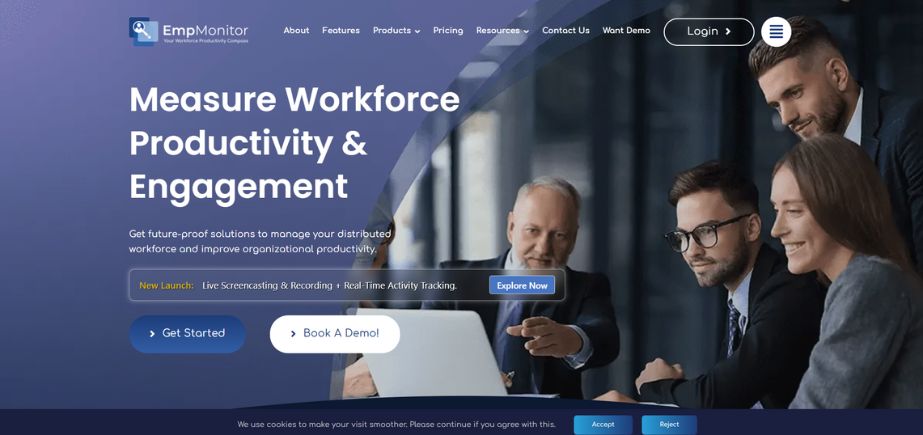
Rating: 4.6/5
Website: empmonitor.com
Best Use Cases: Employee engagement and comprehensive productivity management
EmpMonitor provides very strong workforce management systems that have been tailored to meet the needs of remote and hybrid workforce models. This enterprise-level tool gives you everyday work metrics based on the active time review, activity monitoring, and taking a screenshot periodically. The emphasis on data security by the system implies that all information is safeguarded utilizing stipulated systems of storing and transferring databases.
Located monitoring and project, and task management abilities are aligned with each other to give a single channel for inducting new staff and continuing the continuous process of productivity monitoring. The intuitive interface provides an opportunity to easily create a task, assign it, and mon it, so it is easy to manage deadlines and promptly see what is happening in the project.
Key Features:
- Activity monitoring systems
- Insider threat prevention
- Daily productivity statistics
- Project management integration
- Security-focused data handling
Pros:
- Comprehensive monitoring suite
- Strong security measures
- User-friendly interface
Cons:
- Potential employee resistance
- Privacy considerations
- Feature complexity
Pricing: Starting at $2.50 per user per month with custom enterprise packages.
9. WorkStatus
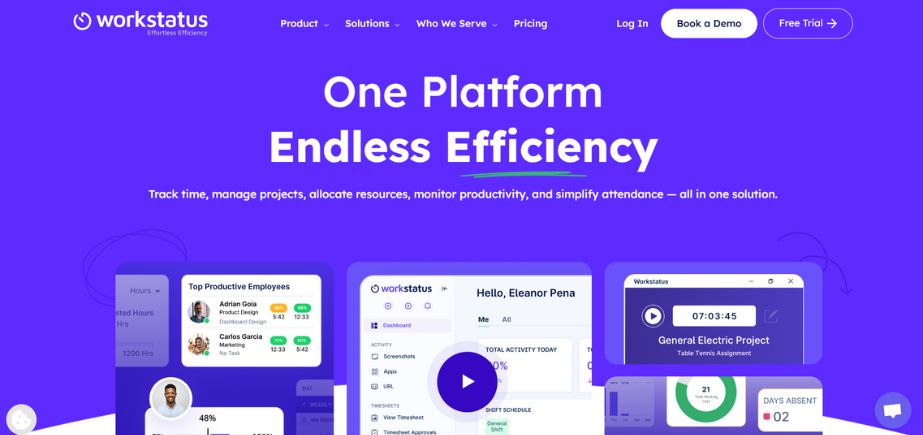
Rating: 4.6/5
Website: workstatus.io
Best Use Cases: Remote workforce management and location tracking
WorkStatus offers remote workers task-specific workforce management abilities that are ideal for a distributed teaming aspect. This new platform provides time tracking features and live location analytics to have a complete overview of the remote workplace and staff distribution. GPS tracking functionalities keep the records of the correct location and will ensure they obey work-at-home rules, as well as policies.
The centralized system of management of employees brings all of the information about team members to one place, which makes administration and oversight even easier. Such characteristics of WorkStatus provide it with greater usefulness to an organization that administers employee teams operating in a physically decentralized location in the onboarding phase and beyond.
Key Features:
- GPS location tracking
- Centralized team management
- Live location analytics
- Time tracking integration
- Geofencing capabilities
Pros:
- Excellent location tracking
- Centralized management system
- Real-time analytics
Cons:
- Privacy concerns potential
- Limited project features
- GPS dependency requirements
Pricing: Starting at $2.99 per user per month with advanced features in higher tiers.
10. Jira
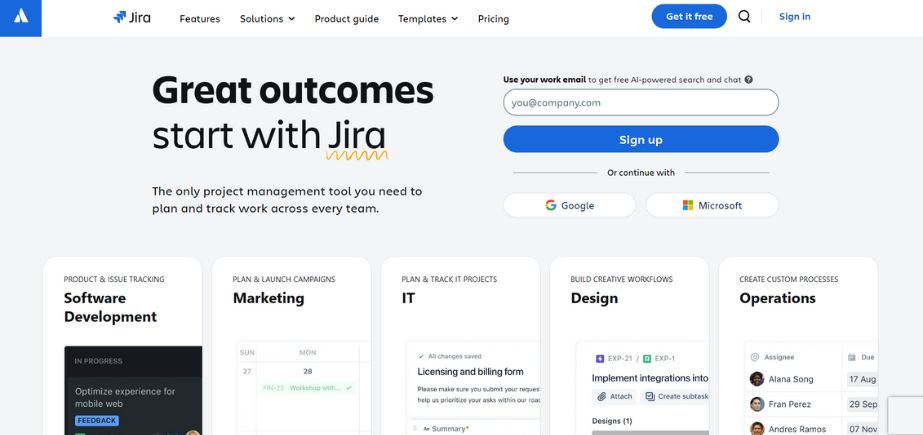
Rating: 4.3/5
Website: atlassian.com/software/jira
Best Use Cases: Project management and workflow optimization systems
Jira is an effective project management tool that allows handling complex onboarding processes with an advanced structure and monitoring of tasks. This multi-purpose facility helps groups divide big onboarding activities into small parts with the help of Scrum boards and sprint planning approaches. Roadmap capability makes remote workers comply with organizational goals and visions, presenting a project plan, timeline, and individual work in an easy-to-understand manner.
The entire reporting and dashboard platform delivers actionable content in a working environment to make sure that the teams are updated with the progress and the priorities. The features of dependency management visualize the relationships between tasks and assist in the question of how to avoid bottlenecks to affect the onboarding process and the entire productivity.
Key Features:
- Project board organization
- Dependency management systems
- Roadmap planning tools
- Scrum board functionality
- Advanced reporting dashboards
Pros:
- Powerful project features
- Excellent dependency tracking
- Comprehensive reporting
Cons:
- Steep learning curve
- Complex interface design
- Overwhelming feature set
Pricing: Free plan for up to 10 users; paid plans start at $7.16 per user per month.
How to Choose the Right Tools For Remote Employee Onboarding
The choice of the right onboarding to be used should be treated as a careful assessment of the organizational needs, technical demands, as well as the long-term strategic goals of the distributed work workforce management.
- Budget: Estimate the total cost of ownership to be incurred in licensing, implementation costs, training needs, and regular maintenance costs to be aligned to sustain financial investment.
- Integration: Evaluate the compatibility of the situation of existing systems, applications, and processes, seeking to limit the impact of integration and maximize efficiency gains and process automation due to the data flowing easily.
- Scalability: Take the future growth into account; consider the outcomes of the projections and the usability of the platforms in terms of scaling to needed expansion so that solutions chosen enable the rising number of employees without necessitating a costly migration or buyout.
- Security: Look at information protection configurations, compliance certification, access standards, and auditability capacity to remain regulatory compliant yet honor employee sensitive information during the onboarding procedures.
- Support: Look into the quality of vendor support, their documentation, training, and community forums to have good back-up in the implementation and running of such a system to receive the best results/outcomes.
Conclusion
The remote work environment is changing, and viable onboarding solutions are more important than ever to organizational success. The Best Tools For Remote Employee Onboarding are those that focus on automating, secure point of engagement, engagement, and analytics, to deliver a smooth integration experience to the new co-workers. When choosing a platform, organizations need to deeply consider their needs, technical and budget limitations.
The tools that are mentioned in this extensive guide present a wide variety of features that can include simple task management to advanced behavioral analytics. The success will be determined by the selection of the right solutions based on the company culture, technical infrastructure, and long-term strategic goals.
Better onboarding technology is a true investment that eventually becomes rewarded with greater employee retention, higher satisfaction, and faster productivity realization in distributed work settings.
Frequently Asked Questions
1: How is a remote onboarding different from a traditional one?
Remote onboarding is fully based on digital technology and online communication, so to recreate people-in-life processes and to preserve the level of engagement, special tools are needed.
2: What is the time frame that remote employee onboarding should take?
The majority of successful remote onboarding programs last 30-90 days based on the complexity of a particular role and the integration needs of the organization.
3: Are specialized onboarding solutions useful to small companies?
Yes, there are a lot of such platforms with a scalable pricing model and functionality that fits small businesses trying to turn their remote onboarding procedures into a professional one.
4: Which of the security considerations should be of concern to remote onboarding tools?
The main security aspects are data encryption, procedure access controls, certification compliance, and internal audits to secure data of sensitive data in all processes involving employee data.
5: What measures did you put in place to understand the success of remote onboarding?
Success rates are usually given in terms of time-to-productivity rates, employee satisfaction, retention percentages, stages, onboarding milestones, and training modules completion rates.